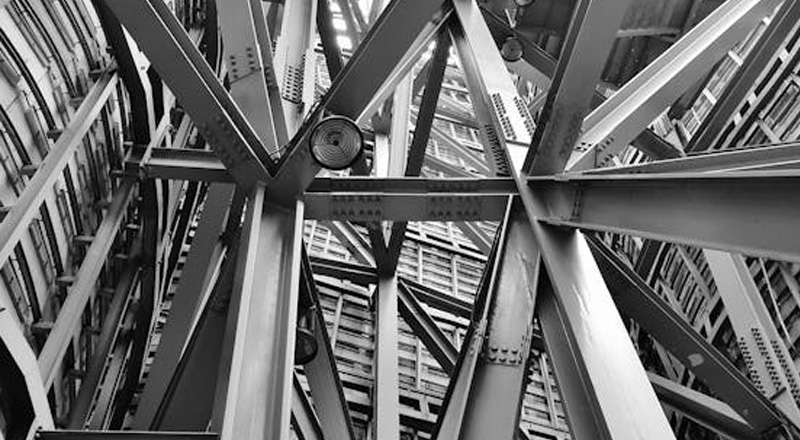Quick answer: High-carbon steel is a type of steel that contains a higher percentage of carbon (typically between 0.6% and 1.0%), giving it increased hardness and strength but also making it more brittle and less ductile compared to lower-carbon steels.
In engineering, particularly when producing components for heavy-duty machinery or precision tools, using materials that offer both strength and durability is crucial.
Steel with elevated carbon content is a prime choice for high-performance applications due to its ability to deliver specific technical advantages.
| Property | Description | Application Examples |
|---|---|---|
| Hardness & Strength | Martensitic transformation provides high tensile strength and resistance to deformation. | Punch dies, cutting tools, automotive gears. |
| Brittleness | Requires differential tempering and case hardening to balance hardness with internal toughness. | Mining machine components, parts subject to impact and abrasion. |
| Wear Resistance | Carbide precipitates improve resistance to abrasive conditions. | Metal forming dies, cutting edges, industrial tools. |
| Machinability | Can be machined with precision by controlling cutting depths and feed rates. | Oil and gas machinery, precision shafts, bearings. |
| Edge Retention | Carbides along the cutting edge allow for extended sharpness under heavy use. | Industrial cutting tools, blades, hydraulic shears. |
Let’s explore the advanced properties and real-world benefits that make this alloy indispensable for demanding tasks.
Exceptional Hardness and Strength: A Foundation for Precision

Carbon-rich alloys excel because they can be transformed at the microstructural level, providing exceptional tensile strength through martensitic transformation during heat treatment (source).
This process realigns the material’s internal structure to withstand extreme forces without deformation. As a result, components crafted from this material offer superior resistance to wear, even in high-stress applications like punch dies or cutting tools, where precision and longevity are essential.
- In one instance, transitioning from mild steel to high-carbon alternatives during the development of tooling systems significantly reduced tool failures.
- This was especially evident in automotive gears subjected to high torque, where recalibration became less frequent, driving down both downtime and operational costs.
By selecting carbon-rich steel for these applications, engineers can ensure consistent performance and extended component life, ultimately reducing long-term expenditure.
Addressing Brittle Nature: Expert Techniques for Toughness

Managing brittleness requires advanced processes like differential tempering and case hardening, which allow the material to retain surface hardness while enhancing internal toughness (source). Techniques like these create components that can endure both impact and abrasive forces, essential for industries requiring durable, wear-resistant parts.
- For a set of mining machine components, applying case hardening allowed the material to withstand abrasive wear, while internal ductility ensured resistance to fracture under stress.
- This solution extended the operational life of components working in severe conditions, proving critical in environments where failure would be catastrophic.
Precision tempering and case hardening enable engineers to fine-tune the material’s performance, aligning its characteristics with specific operational requirements.
Optimized Heat Treatment: Control at the Microstructural Level
Heat treatment plays a pivotal role in enhancing carbon-rich steel’s properties.
| Step | Description | Purpose |
|---|---|---|
| 1. Austenitizing | Steel is heated to a high temperature to transform its structure to austenite. | Prepares steel for martensitic transformation. |
| 2. Quenching | The steel is rapidly cooled in water or oil, locking the carbon atoms in place. | Creates a hard, brittle martensite structure. |
| 3. Tempering | The steel is reheated to a lower temperature and then cooled again. | Relieves internal stresses and balances hardness with toughness. |
| 4. Case Hardening (Optional) | Only the surface of the steel is hardened while the core remains ductile. | Improves wear resistance while maintaining impact resistance. |
By carefully controlling heating and cooling cycles, engineers can manipulate grain structure, improving hardness, flexibility, and resistance to fatigue.
- In aerospace applications, for example, gears subjected to vibrational stress benefited from precise tempering, which ensured that the components maintained structural integrity while minimizing the risk of cracking over time.
Microstructural refinement, achieved through careful temperature control, enhances both the material’s strength and its resistance to repetitive stress. This attention to internal structure helps prolong the lifespan of high-performance components, particularly in applications requiring long-term reliability under cyclic loads.
Wear Resistance Through Carbide Engineering

Wear resistance depends on more than just the overall hardness of steel. The specific formation of carbide precipitates during alloying has a significant effect on how well the material can endure abrasive conditions (source).
By focusing on carbide distribution, engineers can improve the material’s ability to handle friction and surface wear, which is particularly useful for tools like dies and cutting edges.
- In a project involving metal forming dies, selecting a steel alloy with optimized carbide precipitation led to a measurable reduction in wear.
- This, in turn, decreased downtime for tool replacement and maintenance, offering clear operational benefits.
Carbide-rich alloys protect critical components from degradation, ensuring longer intervals between servicing, which is a key consideration for manufacturers focused on high productivity.
Machinability: Precision Without Sacrifice
High-carbon steel offers reliable machinability when approached with process optimization. By controlling cutting depths and feed rates, engineers can work-harden the material’s surface while maintaining dimensional accuracy. This is especially important for applications requiring extremely tight tolerances.
- In a project for oil and gas machinery, careful management of machining conditions allowed us to maintain accuracy to within microns, even under high-speed cutting operations.
- Proper lubrication and cooling during machining not only prevent heat deformation but also allow for smoother cutting, reducing tool wear and increasing component precision.
This precise machinability makes carbon-rich steel a preferred choice for parts requiring complex geometries, such as shafts, bearings, and other machine elements where dimensional stability is paramount.
Edge Retention: Maintaining Efficiency Over Time
Edge retention is a critical factor in tooling, where the ability to maintain a sharp, efficient cutting surface directly impacts production efficiency. The distribution of carbides along the cutting edge allows these alloys to retain sharpness through heavy, continuous use, reducing the frequency of maintenance and tool replacement.
- During the manufacturing of industrial cutting tools, carbide-rich steels were employed to extend the sharpness of the cutting edges, reducing downtime for re-sharpening.
- This not only improved efficiency on the production floor but also contributed to cost savings by minimizing interruptions in the manufacturing process.
By focusing on the material’s ability to maintain its edge, engineers can optimize tools for longevity and performance, ensuring that production remains consistent and efficient.
Versatility in Application: Optimizing Steel for Specific Requirements
Carbon-rich alloys can be modified to meet various needs through controlled alloying and heat treatment. For components that must endure corrosive environments or extreme temperatures, incorporating metals like chromium or vanadium provides both hardness and resistance to environmental factors.
- In a chemical processing plant project, using a corrosion-resistant variant of high-carbon steel for pump components allowed the machinery to withstand acidic conditions without sacrificing strength.
- The specialized alloy improved both the wear life and corrosion resistance, solving a dual challenge for the plant’s operations.
By engineering these materials to address specific operational environments, engineers gain the flexibility needed to meet the challenges posed by extreme conditions, from chemical processing to offshore drilling.
